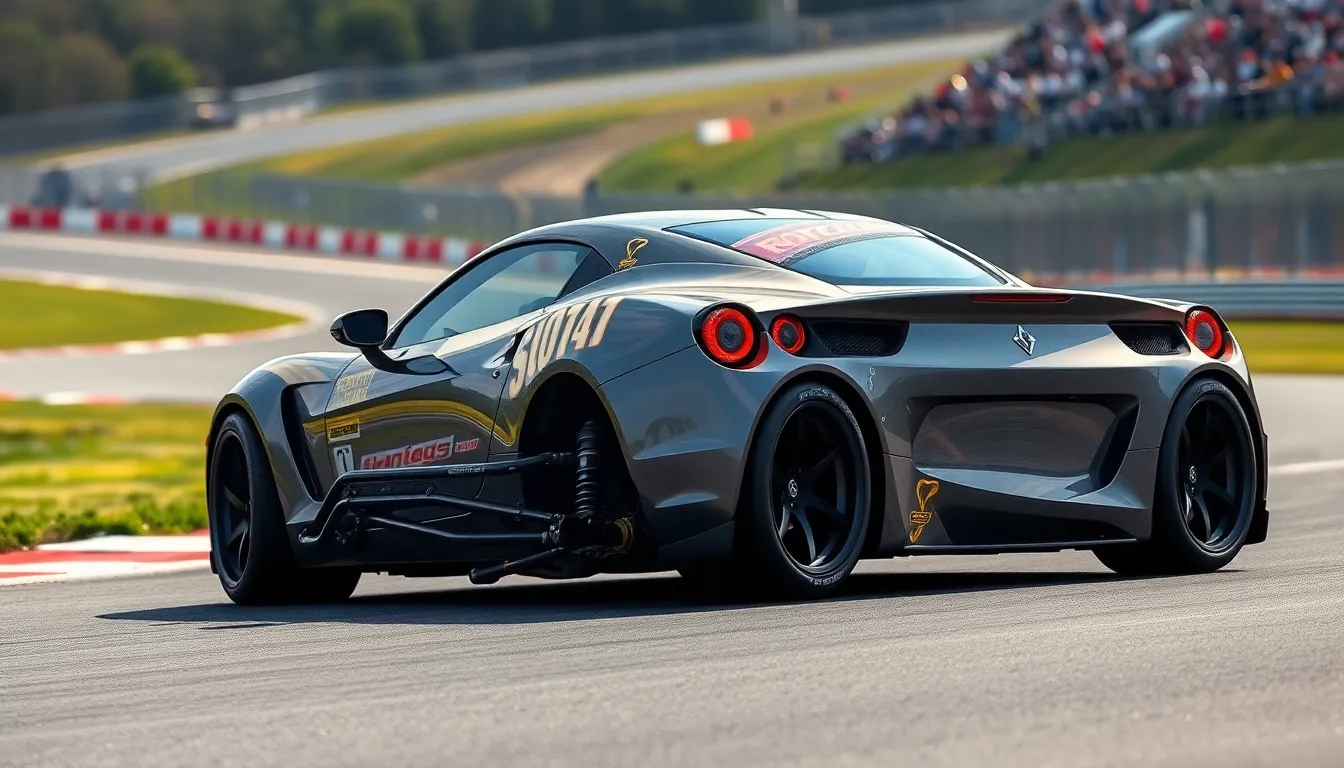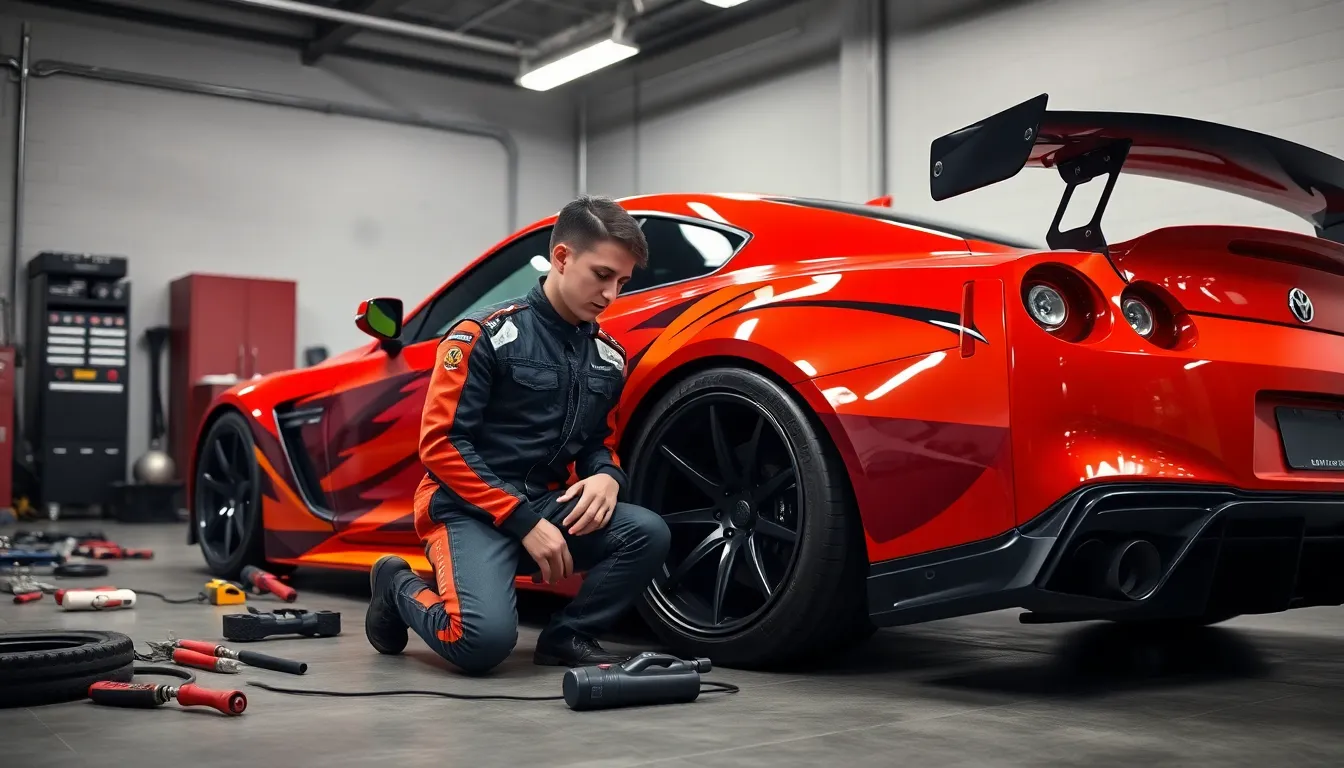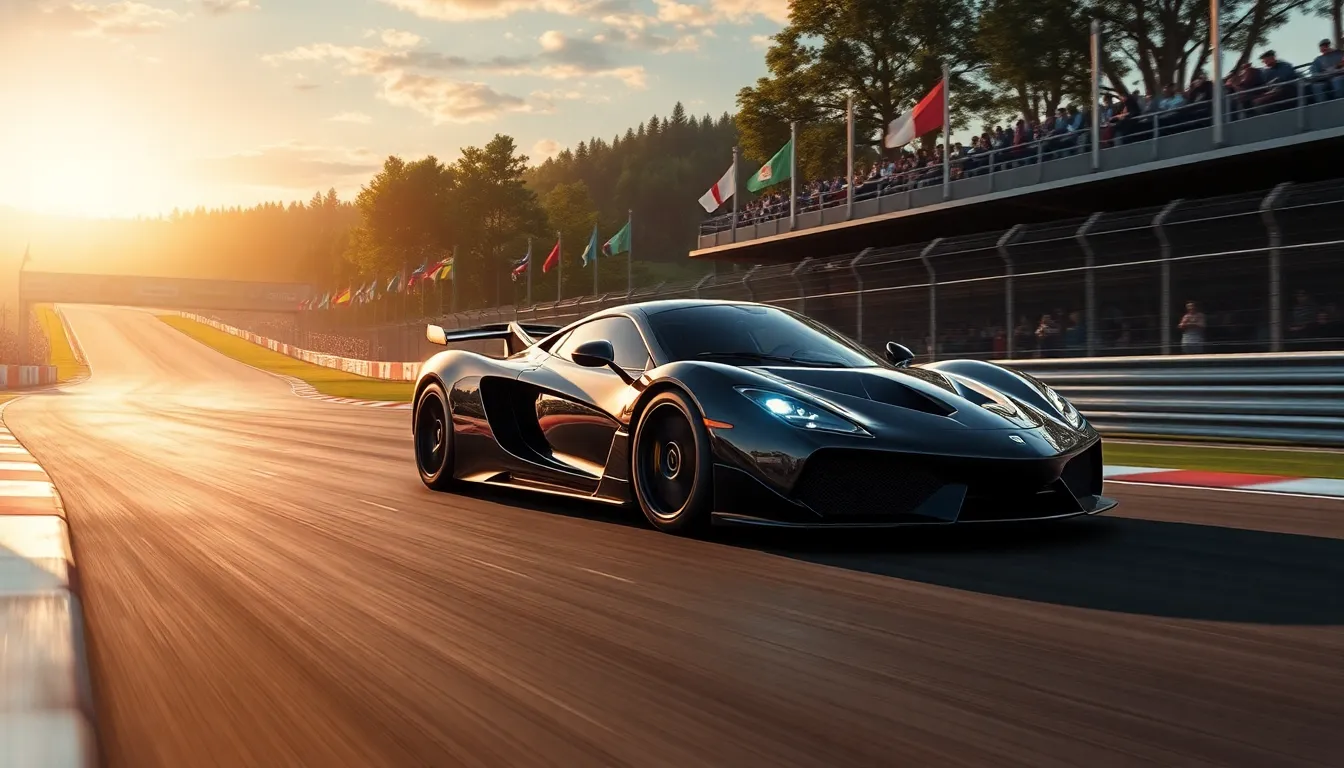In the world of racing games, few titles ignite passion quite like Gran Turismo. It’s not just about speed; it’s about precision, finesse, and tuning your ride to perfection. Imagine gliding around the track, your car purring like a content cat, while others struggle with their understeering beasts. Tuning isn’t just a feature; it’s a way of life for serious racers who want to leave their competition in the dust.
Table of Contents
ToggleOverview of Gran Turismo Tuning
Gran Turismo tuning enhances vehicle performance within the game. Players commit to improving car dynamics and adapting settings for optimal results on the track.
Importance of Car Tuning
Car tuning significantly affects handling, speed, and overall performance in Gran Turismo. Fine-tuning suspension impacts cornering stability. Adjusting tire pressure influences grip and responsiveness. Choosing optimal settings allows drivers to exploit the vehicle’s strengths while minimizing weaknesses. Successful racers understand the importance of tuning for competitive advantage. Performance-oriented setups help players excel in various race conditions, making precise adjustments essential for achieving top lap times.
Types of Tuning Options
Gran Turismo provides multiple tuning options for car enthusiasts. Suspension tuning includes adjustments to springs, dampers, and anti-roll bars. Engine tuning allows players to modify horsepower output and torque. Transmission settings, such as gear ratios, influence acceleration and top speed. Additionally, players can customize aerodynamics through wing adjustments, affecting downforce and drag. Finally, brake balance tuning improves stopping power and stability during cornering. Each tuning type offers unique advantages, enabling players to tailor vehicles to their driving style and track conditions.
Performance Enhancements

Optimizing vehicle performance through tuning is essential in Gran Turismo. The right adjustments lead to improved handling, speed, and overall track efficiency.
Engine Tuning
Power output directly influences a vehicle’s lap times. Adjusting parameters like air-fuel mixture and ignition timing can increase horsepower significantly. Players often utilize performance chips to enhance engine response, allowing for quicker acceleration. Installing upgraded parts, such as exhaust systems and turbochargers, also boosts power. Each modification impacts the driving experience, so balancing upgrades is vital for maintaining control during races. Enhancing the engine delivers noticeable gains on the track.
Suspension Adjustments
Suspension settings affect how a vehicle handles different terrains. Adjusting ride height and stiffness helps optimize cornering stability and grip. Players frequently modify dampers and anti-roll bars to fine-tune the car’s response. Alignments, such as camber and toe settings, further influence performance during sharp turns. These adjustments create a tailored driving experience suited for various track conditions. Ensuring proper suspension tuning allows for better handling and responsiveness in competitive scenarios.
Aesthetic Customizations
Aesthetic customizations in Gran Turismo allow players to express their individuality through vehicle design. These upgrades enhance the visual appeal while providing unique advantages on the track.
Body Kits and Spoilers
Body kits significantly alter a car’s look and aerodynamics. They include modified bumpers, side skirts, and fenders that improve downforce. Spoilers also play a crucial role, increasing stability at high speeds. Players choose specific kits and spoilers for their aesthetic value and performance impact. Enhanced body shape can lead to better airflow and reduced drag, ultimately benefiting lap times. Selecting the right combination creates a unique style while optimizing vehicle handling.
Wheel and Tire Upgrades
Wheel and tire upgrades are essential for both aesthetic appeal and performance. Upgrading to larger wheels provides a sportier look and improved grip. Choosing low-profile tires can enhance the vehicle’s responsiveness, making it feel more agile on the track. Players experiment with different designs and colors to personalize their vehicles further. The right wheel and tire combo not only elevates the appearance but also impacts traction and cornering capabilities. Opting for lightweight wheels contributes to faster acceleration and reduced unsprung weight.
Tuning Strategies for Different Cars
Tuning strategies vary significantly across different types of vehicles. Understanding these differences enables more tailored performance enhancements.
Sports Cars
Sports cars demand precise tuning to maximize speed and handling. Adjusting the suspension setup enhances cornering capability and stability. Lowering the ride height can reduce aerodynamic drag, while stiffening the suspension improves road grip. Engine tuning also plays a crucial role; optimizing the air-fuel mixture and ignition timing boosts horsepower. Performance chips often enhance throttle response, delivering quicker acceleration. Lastly, selecting the right tire compounds can dramatically affect traction, enabling racers to navigate curves at higher speeds.
Luxury Vehicles
Luxury vehicles prioritize a balance between performance and comfort. Tuning these cars often focuses on suspension modifications that enhance ride quality while maintaining stability during high-speed maneuvers. Adjustable dampers allow drivers to tailor the ride experience based on track conditions. Engine tuning for luxury cars typically emphasizes smooth power delivery, refining throttle response for a more pleasant driving experience. Upgrading components such as exhaust systems can reduce back pressure, enhancing engine performance. Additionally, careful selection of tires ensures both comfort and grip, maintaining a sophisticated driving experience.
Conclusion
Gran Turismo tuning is an essential aspect of mastering the game and achieving competitive success. By focusing on both performance and aesthetics, players can create vehicles that not only look great but also perform exceptionally on the track. The ability to fine-tune various components allows for a personalized driving experience tailored to individual preferences and racing conditions.
Whether optimizing engine performance or enhancing handling through suspension adjustments, each tuning decision plays a pivotal role in overall vehicle dynamics. With a deep understanding of tuning strategies, players can unlock their car’s full potential and gain a significant edge over their competitors. This commitment to precision and customization truly sets Gran Turismo apart in the racing game genre.



